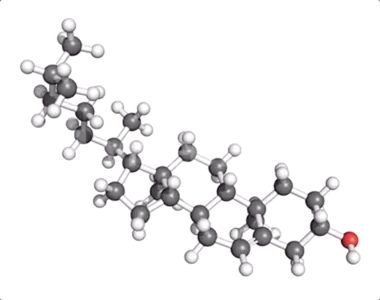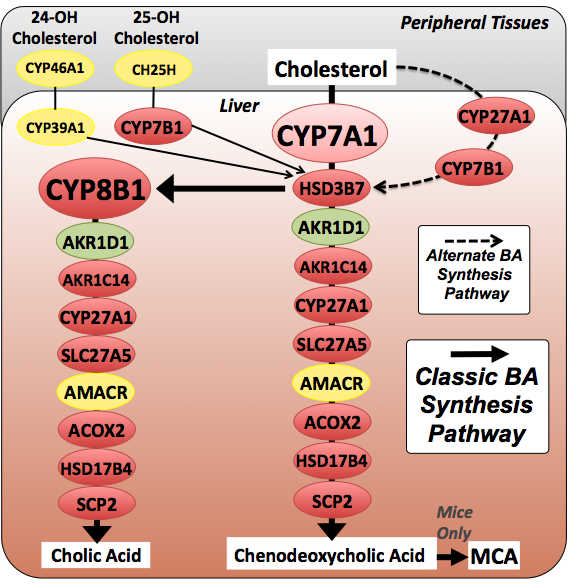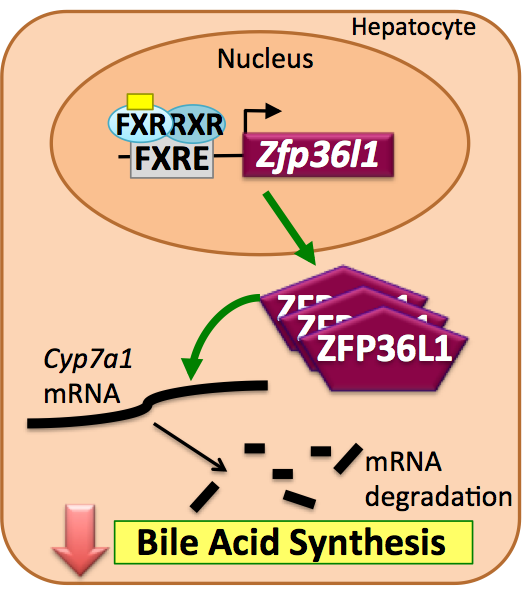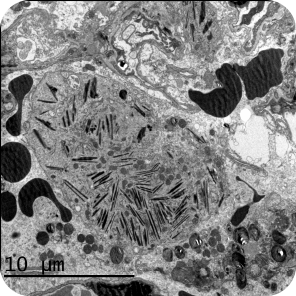Research
Lipids (particularly cholesterol and phospholipids) are essential components of cell membranes and are precursors to many signaling molecules, including steroid hormones, bile acids and oxysterols. As such, lipid synthesis pathways are among the most intensely regulated processes in biology. We are interested in understanding mechanisms that control celular, tissue and whole-body lipid homeostasis in healthy and disease states.


Bile Acids in Health and Disease
Bile acids are metabolites synthesized from cholesterol, which can act as detergents to facilitate lipid absortpion in the gut. In addition, bile acids are also potent signalling molecules, as they can act as ligands for nuclear receptors, including FXR (Nr1h4). Nuclear receptors are transcription factors that are activated in the presence of a ligand to elicit cellular responses that maintain metabolic homeostasis. When bile acid levels are elevated, they turn on FXR, which then controls almost all aspects of bile acid metabolism to prevent accumulation of bile acids. FXR activation also affects cholesterol levels in the circulation and lipid levels in the liver. This latter property has generated significant pharmacological interest in FXR agonists. Our lab is working to elucidate novel molecular mechanisms that are regulated by FXR to mediate downstream effects on lipid metabolism.

Post-transcriptional Regulation of Lipid Metabolism
Lipids are not only central building blocks of our cells but also important signalling molecules. Our lab is interested in understanding the role different lipids play as signalling molecules to maintain metabolic homeostasis. Further, we are also investigating how lipid signalling becomes defective in disease. Following a meal, our organs become flooded with new nutrients, including lipids and they have to adapt quickly to the cells that make up these tissues have to adapt quickly to these new conditions. We are interested in the changes that occur in the liver and intestine under different conditions of lipid flux. Hepatocytes and enterocytes both deal with the changing conditions by turning genes on and off, and we are interested in determining the molecular mechanisms that our cells utilize to change gene expression and protein levels to adapt and survive the different metabolic states.

Lipid Homeostasis in the Lung
Lipids are also essential for breathing, gas exchange, and host defense. The mammalian airway resembles an intricate upside-down tree. Alveoli are made up of two types of epithelial cells and macrophages. Type 1 epithelial cells are thin and flat and make up most of the structure of the alveolar wall. Type 2 epithelial cells, secrete a surfactant, a mixture of cholesterol, phospholipids and proteins that coat the alveoli. Macrophages, which form the immune defense system of the lungs, clear out the microorganisms and particles brought in by the circulating air. Surfactant deficiency is fatal, and surfactant dysfunction results in respiratory distress. Persistent inflammation and cholesterol imbalance underlie both cardiovascular disease and lung pathologies. We are interested in understanding the complex cross-talk between lipid homeostasis, inflammation and immunity in the lung, particularly in the context of lung disease and host defense.